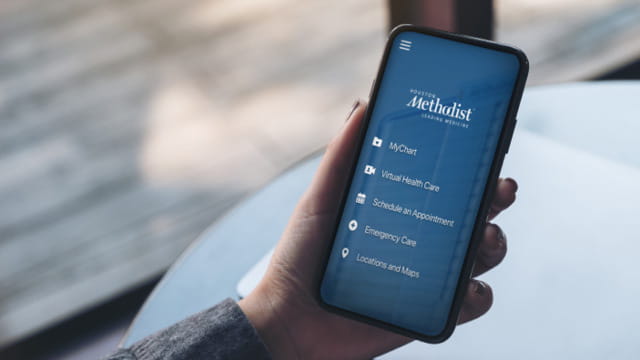Mobile Health Technologies: Best Outcomes With More Patient Engagement
Aug. 25, 2021 - Todd AckermanMobile health technologies need universal guidelines to ensure that quality standards, such as tracking patient engagement, are routinely met, according to a recent journal article authored by Houston Methodist researchers.
The article criticized the lack of a consensus about how best to measure outcomes from medical care provided virtually, increasingly considered a major component of the future of medicine. The practice increased exponentially during the pandemic.
"We're just scratching the surface right now," says Courtenay Bruce, an associate professor at Houston Methodist's Institute of Academic Medicine and the paper's lead author. "We're going to learn a lot from the response to COVID-19, which spurred us to launch digital technologies, telehealth, virtual health. In two years, I think we'll have a much better understanding of what makes for success and what doesn't."
In the meantime, the Houston Methodist article calls for more patient participation and engagement in mobile health technology programs, as well as the creation of an international collaboration to develop quality standards before even greater dissemination of such programs.
The explosion in mobile health technologies
There's no denying that the use of mobile health exploded as a result of COVID-19. In March 2021, according to one poll, 62% of Americans reported having had a telehealth appointment. In March 2020, the number was just under 20%.
At Houston Methodist, there are currently 1.3 million people using the system's mobile health technologies. Just before COVID-19 hit, the number was 10,000.
The Houston Methodist article, published in November in JMIR mHealth and uHealth, uses the term "mobile technologies" instead of "telemedicine" because the latter focuses mostly on virtual appointments. The term mobile technologies also encompasses digital communication with the patient before and after appointments and procedures.
Houston Methodist's own research with mobile technologies was undertaken for two primary reasons: One, because its doctors wanted to collect patient-reported outcomes in a more systematic manner than just a survey, and two, because of feedback from patients that they needed more information on what should and shouldn't occur after discharge.
There has been little evidence of mobile technologies' effectiveness. The only real major studies, conducted more than a decade ago, found only modest benefits.
Mobile health technologies aren't just about greater efficiency
But data involving Houston Methodist's program showed it improved participant outcomes — shorter lengths of stay, fewer readmissions, reduced missed appointments and fewer cancellations. The findings were just as evident among older and sicker patients, contrary to the suspicion by many that such programs work best mostly because people participating in them tend to be younger and healthier.
The program did work best in surgical patients. Bruce says she thinks that's because those procedures are elective and time-limited and the population can see an end in sight. There's not as much can be done for patients with more chronic conditions, like heart failure or lung inflammation.
Still, Bruce said outcomes were better in medical patients, too.
Bruce said the big key to making telemedicine fully successful will be patients' greater use of technology to measure vital signs like blood pressure or heart rate. She acknowledged that will put a "tremendous onus" on the patient, given the cost and the technical wherewithal needed for such equipment.
"COVID-19 has demonstrated everybody is now a digital consumer," says Roberta Schwartz, executive vice president and chief innovation officer at Houston Methodist Hospital, the system's flagship hospital. "I thought that it would take five years, but we got there in five months."


